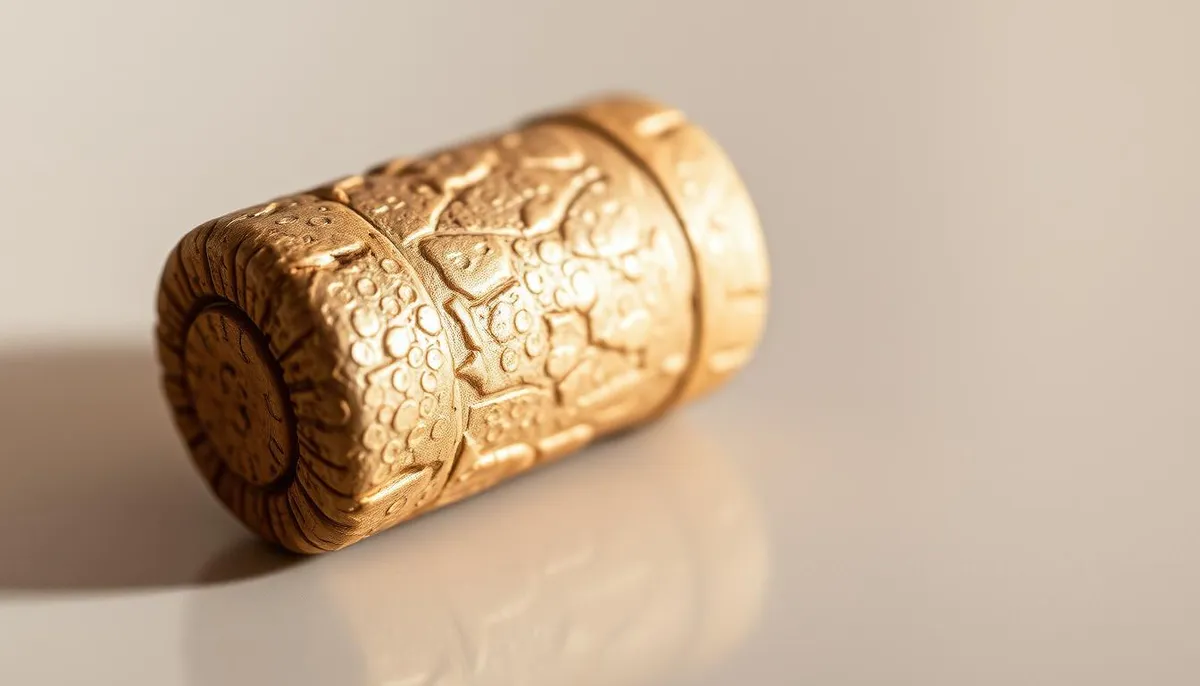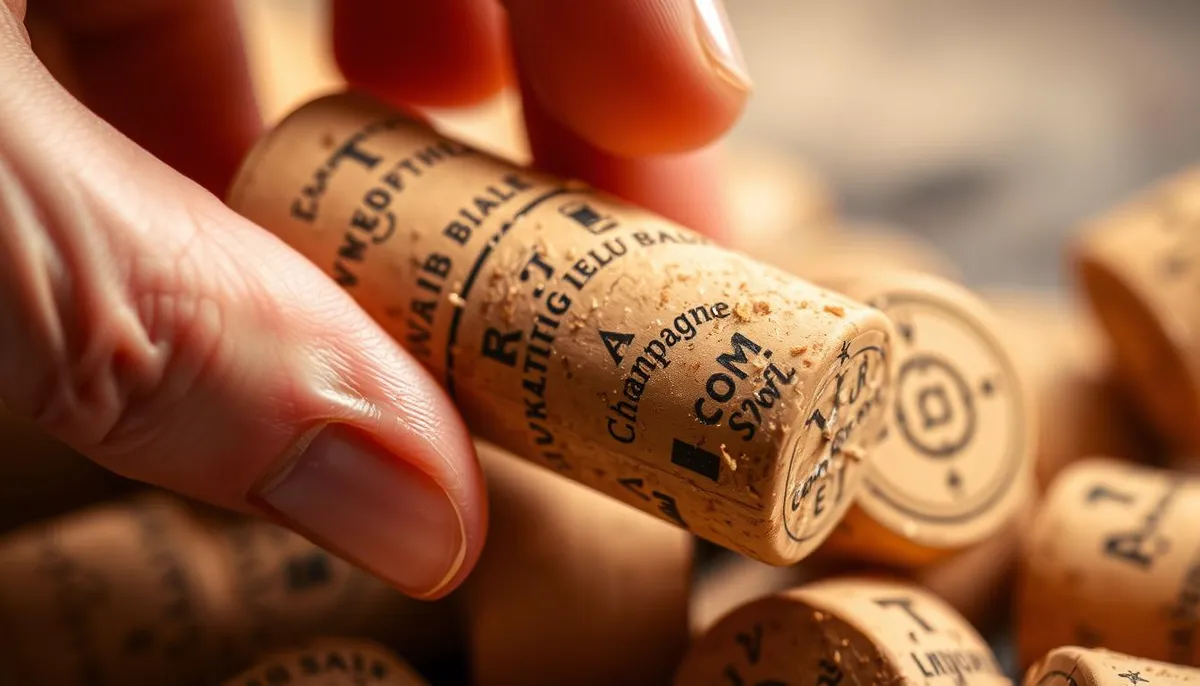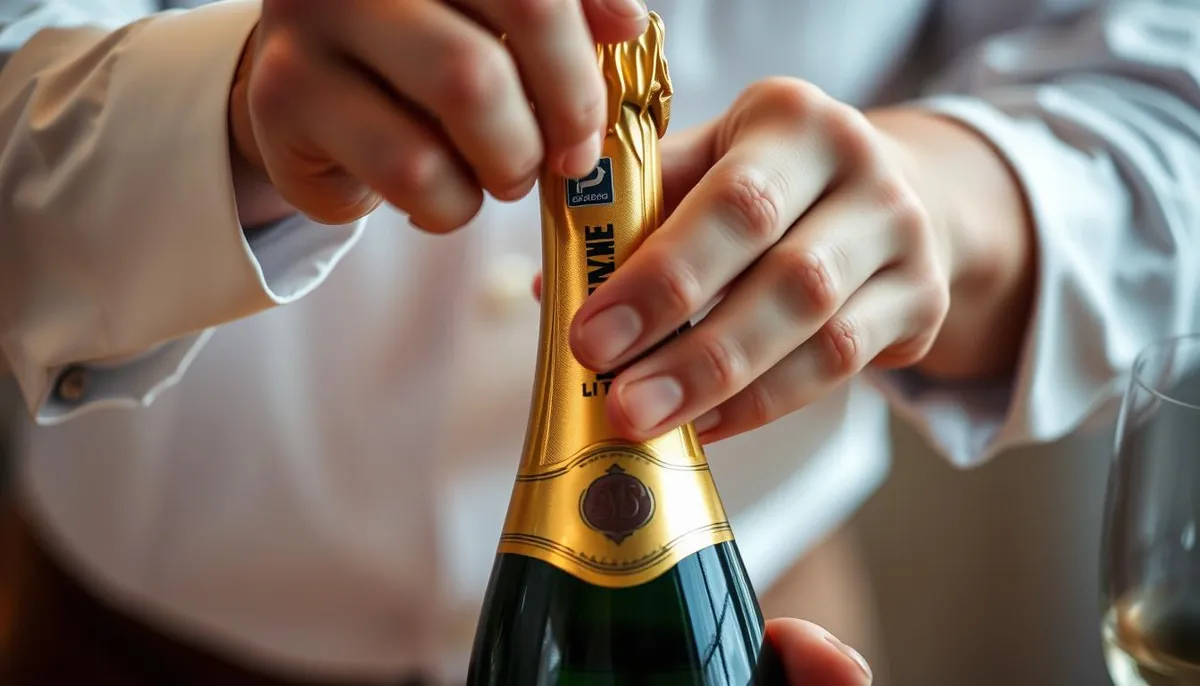Discover the art of exporting premium champagne corks with our expert guidance. The bouchon pour champagne is a critical component in preserving the quality and character of fine champagne during international shipping and storage.

With a rich history dating back to 1827, champagne corks have evolved to meet the growing demands of the industry. Our team offers personalized export solutions for champagne producers and distributors looking to expand their international presence with quality products.
Whether you’re looking to export champagne to the United States or other global markets, understanding the unique properties of champagne corks is essential for maintaining product integrity across varying climate conditions.
Key Takeaways
- Expert guidance on exporting premium champagne corks
- Understanding the historical significance and modern manufacturing techniques of champagne corks
- Importance of proper cork handling and shipping considerations
- Personalized export solutions for champagne producers and distributors
- Maintaining product integrity across global markets and climate conditions
Understanding the Significance of Bouchon Pour Champagne
Champagne corks play a vital role in maintaining the quality and integrity of champagne. The unique properties of these corks are crucial for withstanding the pressure of the carbonated wine.
The Unique Properties of Champagne Corks
Champagne corks are made from high-quality natural cork, which provides the necessary elasticity and impermeability to maintain the seal. The “Champagne” appellation must be inscribed on the cork, signifying its authenticity. In 1993, the largest champagne cork was recorded, measuring 1.20 meters in height and 80 cm in diameter, showcasing the potential scale of these corks.
The cork’s ability to withstand the pression of the gaz inside the bouteille champagne is remarkable. The cork must expand to fill the neck of the bottle, creating an tight seal that prevents the gaz from escaping, thus preserving the effet of the champagne until the moment of consumption.
Why Quality Matters for Export Markets
When exporting champagne globally, the quality of the cork becomes even more critical. The cork must withstand varying temperatures, pressure changes during air transport, and extended storage periods. Premium export markets demand perfect presentation, and a substandard cork can damage brand reputation in competitive international markets.
- The cork must maintain its seal integrity across different climate zones, from the humidity of tropical regions to the dryness of desert climates.
- Regulatory compliance in different countries often includes specific requirements for cork quality and labeling.
- Higher-quality corks command premium prices but provide essential protection for exported champagne.
- The visual appearance of the cork serves as a quality indicator to international consumers.
In the global champagne monde, the significance of bouchon pour champagne cannot be overstated. Ensuring the highest quality of corks is crucial for maintaining the reputation of champagne brands worldwide.
The History and Manufacturing of Champagne Corks
The art of crafting the perfect bouchon pour champagne is a tale of tradition, precision, and qualité. The significance of champagne corks cannot be overstated, as they play a crucial role in preserving the effervescence and flavor of champagne. In this section, we will delve into the history and manufacturing process of these intricate corks.
From Wooden Pegs to Modern Cork Stoppers
The history of champagne corks dates back centuries, with early versions being simple wooden pegs. Over time, the design and materials used have evolved significantly. Modern champagne corks are made from high-quality liège, carefully harvested from cork oak trees. The production process begins with the removal of the bark from the tree during the summer months when it detaches more easily. The first debarking occurs on trees that are at least 25-30 years old, with subsequent harvests taking place every 9-10 years.
The quality of cork needed for champagne corks is only met from the third debarking, making the passage of time a crucial factor in determining the quality of the final product. As the cork ages, it becomes more suitable for use in champagne production.

The Meticulous Production Process
The production of champagne corks involves multiple stages, starting with the boiling of raw cork at 100°C to increase its malleability. The cork then undergoes an extended resting period to reduce tannins and allow oxidation. After resting, the cork sheets are sorted by thickness and quality, boiled again, and then cut into strips. These strips are perforated to create cylinders of exact dimensions, trimmed to specific heights, and polished to ensure smooth surfaces.
The final bouchon is a composite product, typically featuring an agglomerated cork body with 1-2 solid cork discs attached to the bottom. This design provides both elasticity and impermeability, making it an ideal seal for bouteille de champagne. The precision manufacturing process ensures that each cork meets the highest standards of quality, capable of withstanding the pression inside the bottle.
Throughout the production process, quality control is paramount, with multiple sorting and classification steps to ensure that only the finest cork material makes it into premium champagne bottles destined for export. The result is a bouchon that not only preserves the champagne but also enhances the overall experience of enjoying a bottle of fine champagne.
Selecting Premium Bouchon Pour Champagne for Export

For champagne producers looking to export their products, selecting the right bouchon pour champagne is vital for preserving the bulles and pression within the bouteille. The significance of this choice cannot be overstated, as it directly impacts the quality and integrity of the champagne upon arrival in international markets.
Quality Indicators to Look For
When evaluating bouchons pour champagne, several quality indicators must be considered. The density, elasticity, and oxygen transfer rate of the cork are crucial factors that determine its ability to preserve the champagne. Premium-grade corks are designed to provide a superior seal against gaz escape, maintaining the optimal pression within the bottle.
The physical specifications of export-grade corks often exceed standard requirements, with tighter tolerance ranges for dimensions and density. This ensures consistent performance across varying environmental conditions encountered during international shipping.
Cork Grades and Their Impact on Champagne Preservation
Champagne cork grades range from economy to ultra-premium, with significant differences in their properties. Premium-grade corks, often labeled as “Extra” or “Flor” grade, offer superior sealing capabilities. The correlation between cork grade and champagne shelf life is particularly important for export markets, where bottles may remain in transit or storage for extended periods.
Higher-grade corks feature more solid cork discs at the wine-contact end, providing better impermeability while allowing minimal oxygen transfer beneficial for certain champagne styles. Investment in premium cork grades yields significant returns for exporters by reducing product loss and maintaining quality consistency across global markets.
By understanding the importance of bouchon pour champagne and selecting premium grades, exporters can enhance their brand reputation for quality and ensure their champagne reaches consumers worldwide in optimal condition, ready to be enjoyed at the perfect moment.
Proper Champagne Handling Techniques for Export
Exporting champagne requires careful handling to preserve its unique characteristics and prevent damage during transportation. The bouchon champagne, or champagne cork, is a critical component that requires special attention. The cork is coated with silicone oil, paraffin, or silicone elastomer resin to facilitate its removal, and resistant corks may require champagne pliers.
Temperature and Storage Considerations
Temperature control is vital when storing and shipping champagne. Exporters should maintain a consistent refrigerated temperature to prevent the bouteille, or bottle, from being exposed to extreme temperatures. This is crucial because temperature fluctuations can affect the pressure inside the bottle and potentially cause the cork to dry out or become compromised.
Packaging Requirements for International Shipping
International shipping of champagne demands specialized packaging that protects both the bottle and the critical cork closure from physical damage and environmental stressors. Export-grade packaging should include molded inserts that immobilize bottles completely, preventing any movement that could cause pressure changes or impact damage to the cork during transit.
Additional considerations include thermal packaging solutions for extreme climates, pressure considerations during air freight, and vibration dampening materials to prevent micro-movements that can loosen the cork’s seal. Packaging should also include clear handling instructions in multiple languages to ensure proper treatment throughout the international logistics chain.
Expert Techniques for Opening Champagne Bottles
Opening a champagne bottle is a moment filled with excitement and anticipation. The technique used to open a champagne bottle can significantly impact the overall experience. Whether you’re a seasoned sommelier or a champagne enthusiast, mastering the art of opening champagne is essential for preserving the quality and effervescence of this luxurious beverage.
The Traditional Method
The traditional method of opening champagne involves a series of deliberate steps to ensure a safe and elegant opening. First, the bouchon bouteille champagne or cork, is secured with a thumb to prevent it from popping prematurely. Next, the wire cage is removed, and the cork is gently twisted while holding the bottle at an angle. This méthode traditionnelle helps to release the pressure gradually, minimizing the risk of the cork flying off and champagne spilling.

Professional Tips for Preserving Flavor and Effervescence
After opening the champagne bottle, several techniques can be employed to preserve the flavor and effervescence. Professional sommeliers recommend serving champagne immediately after opening, as each minute results in the loss of approximately 30 million bubbles. To maintain the optimal température, the bottle can be kept in an ice bucket between pours. Additionally, using specialized champagne stoppers can preserve carbonation for up to 24 hours. The proper pouring technique, involving tilting the glass at a 45-degree angle, also helps to preserve the effervescence.
- Serve champagne immediately after opening to minimize bubble loss.
- Use the proper pouring technique to preserve carbonation and prevent excessive foaming.
- Maintain the optimal serving temperature by keeping the bottle in an ice bucket.
By following these expert techniques, you can ensure a memorable and enjoyable champagne experience.
International Regulations for Champagne Export
Navigating the complex landscape of international regulations is crucial for successful champagne export. The global champagne market is subject to a diverse set of regulations that exporters must comply with to ensure their products reach international markets smoothly.
Understanding Appellation d’Origine Contrôlée Requirements
The Appellation d’Origine Contrôlée (AOC) is a critical certification for champagne producers. It guarantees the quality and origin of champagne, ensuring that it meets specific production standards. Exporters must understand and comply with AOC requirements to maintain the integrity and authenticity of their champagne in international markets.
Compliance with AOC involves adhering to strict production guidelines, including the use of specific grape varieties, production methods, and aging processes. This not only ensures the quality of the champagne but also its classification as a genuine champagne product.
Country-Specific Import Regulations
Different countries impose varying regulations on champagne imports, directly impacting cork specifications, labeling requirements, and quality standards that exporters must meet. For instance, the United States requires specific FDA compliance for materials in contact with consumable products, including champagne corks.
Asian markets, particularly China and Japan, have implemented stringent import regulations regarding cork quality and bottle pressure specifications. Exporters must provide specialized documentation and sometimes undergo pre-shipment inspections to comply with these regulations.
Moreover, many countries require detailed technical specifications for the cork-bottle interface, including pressure resistance ratings and materials safety data sheets as part of import documentation. Sustainability regulations are also increasingly affecting import requirements, with some markets requiring certification that cork materials come from sustainably managed forests or include recycled content.
To navigate this complex matrix of country-specific regulations, exporters need specialized knowledge and often local import partners who understand the nuanced requirements for champagne closures in each target market. Ensuring compliance with these regulations is key to successful champagne export.
Conclusion: Elevating Your Champagne Export Business
Elevating your champagne export business begins with understanding the significance of bouchon pour champagne and its impact on your product’s global appeal. The quality of your bouchon selection directly influences your export success, serving as both a functional necessity and a visual indicator of your product’s premium positioning in international markets.
To navigate the complex landscape of champagne export, consider the following key strategies:
- Invest in expert guidance to ensure compliance with international regulations and quality preservation techniques.
- Build relationships with specialized cork suppliers who understand the unique requirements of different export markets.
- Implement a comprehensive quality control system for cork selection and application to ensure consistency across all exported products.
- Leverage the historical and cultural significance of traditional champagne cork design and opening rituals to enhance marketing efforts.
For personalized export solutions tailored to your specific champagne products and target markets, request a customized quote today at https://champagne-export.com. Discover how our expertise can help your champagne reach new international audiences in perfect condition, preserving the bulles and the essence of your fine vin for the ultimate consumer experience.
RelatedRelated articles



